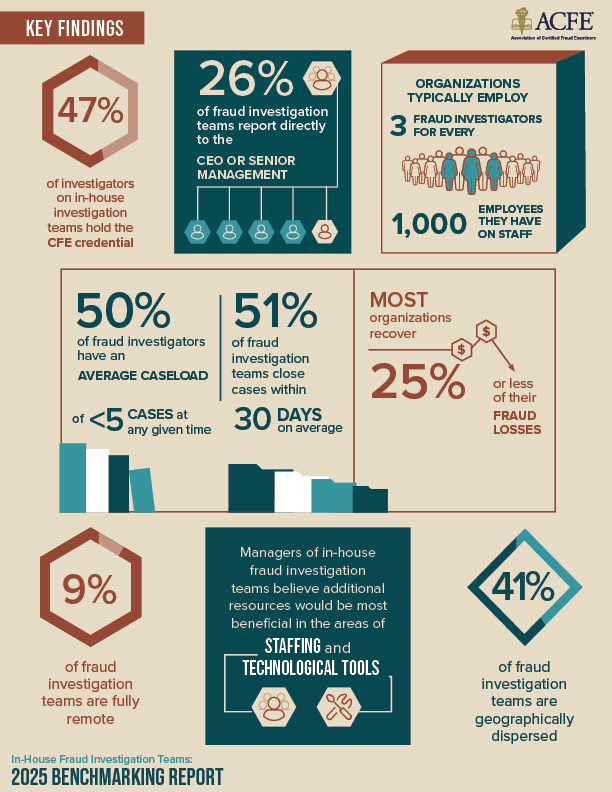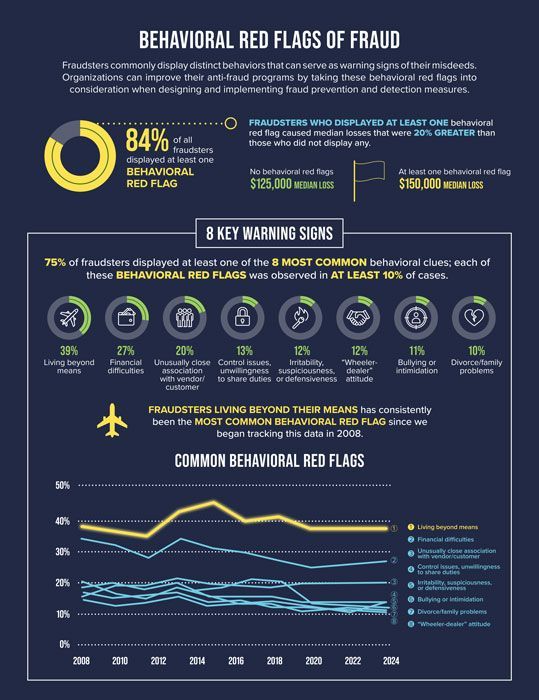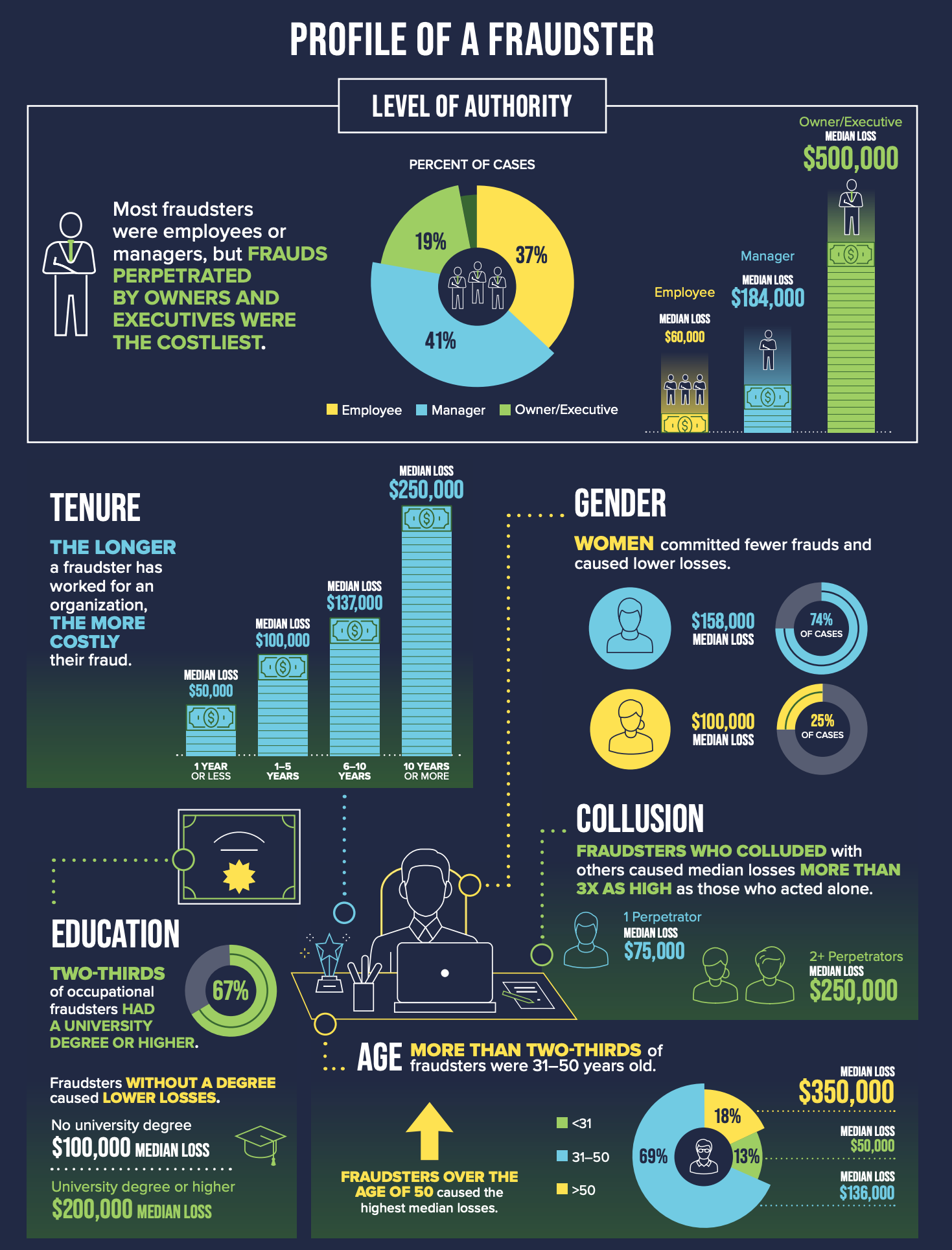The Financial Impact of Fraud on Businesses
Understanding Business Fraud: A Growing Concern
Business fraud is a pervasive issue that affects organizations across industries and geographies. It encompasses a wide range of deceptive practices aimed at gaining unauthorized financial or personal benefits. Common forms of business fraud include financial fraud, cyber fraud, and employee fraud. Financial fraud often involves embezzlement, accounting manipulation, or theft of funds. Cyber fraud, on the other hand, includes tactics like phishing, ransomware attacks, and data breaches. Employee fraud can manifest as payroll fraud, expense fraud, or theft of company assets.
The digital age has amplified the prevalence of fraud, as businesses increasingly rely on technology for operations, transactions, and communication. Cybercriminals exploit vulnerabilities in systems, targeting businesses of all sizes. Small and medium-sized enterprises (SMEs) are particularly vulnerable due to limited resources for robust fraud prevention measures. According to industry reports, global fraud losses are estimated to exceed billions annually, underscoring the urgent need for businesses to address this growing concern.
Fraud is not limited to specific industries or regions. Whether it’s a multinational corporation or a local business, the risk of fraud is universal. The interconnected nature of modern business operations means that even a single fraudulent incident can have far-reaching consequences, affecting stakeholders, customers, and partners alike.
The Direct Financial Costs of Fraud
The most immediate impact of fraud is the direct financial loss incurred by businesses. These losses can take various forms, including stolen funds, unauthorized transactions, and embezzlement. For example, a company may fall victim to a phishing scam, where cybercriminals gain access to sensitive financial information and siphon funds from corporate accounts. Similarly, embezzlement by employees can result in significant monetary losses over time.
Certain industries are more susceptible to direct financial losses due to fraud. Retail and e-commerce businesses, for instance, often face challenges like payment fraud and counterfeit transactions. Financial institutions are frequent targets of sophisticated schemes such as wire fraud and identity theft. Healthcare organizations, too, grapple with billing fraud and insurance scams, which can drain resources and disrupt operations.
The financial toll of fraud extends beyond the stolen amounts. Businesses often incur additional costs to recover from fraudulent incidents, such as hiring forensic accountants, conducting audits, and implementing corrective measures. These expenses can quickly add up, further straining the organization’s financial health.
Hidden Costs: The Ripple Effect of Fraud
While direct financial losses are the most visible consequence of fraud, the hidden costs can be equally damaging. Legal fees and investigation expenses often arise as businesses attempt to uncover the extent of fraudulent activity and hold perpetrators accountable. Compliance penalties may also be imposed if the fraud exposes regulatory violations, such as inadequate data protection measures.
Fraud can disrupt operational efficiency, diverting resources away from core business activities. Employees may need to dedicate time to fraud investigations, reducing productivity and delaying projects. Additionally, fraud can strain relationships with vendors and suppliers, especially if supply chains are compromised. For example, a fraudulent transaction involving a supplier may lead to delays in product delivery, affecting customer satisfaction and revenue.
The ripple effect of fraud can extend to long-term financial implications, such as increased insurance premiums and higher costs for fraud prevention measures. These indirect costs often go unnoticed but can significantly impact a business’s bottom line over time.
Reputational Damage and Its Financial Consequences
Fraud doesn’t just harm a business’s finances—it can also erode its reputation. When customers learn about fraudulent incidents, their trust in the brand may diminish. This loss of trust can lead to decreased customer loyalty, reduced sales, and difficulty attracting new clients. For example, a data breach exposing customer information can result in widespread negative publicity, driving customers to competitors.
Reputational damage has long-term financial consequences. Businesses may struggle to regain market share, especially in industries where trust is paramount, such as finance and healthcare. The cost of rebuilding a tarnished reputation—through marketing campaigns, public relations efforts, and customer incentives—can be substantial.
Several high-profile cases illustrate the financial fallout of reputational damage due to fraud. For instance, companies that experienced major data breaches, such as Equifax and Target, faced not only legal penalties but also significant declines in customer confidence and stock value. These examples highlight the importance of safeguarding a business’s reputation to avoid financial repercussions.
The Role of Cybersecurity in Preventing Financial Losses
Cyber fraud is one of the fastest-growing threats to businesses, with financial implications that can be devastating. Phishing attacks, ransomware, and malware are common tactics used by cybercriminals to exploit vulnerabilities in digital systems. For example, ransomware attacks can lock businesses out of their own systems, demanding hefty payments for access restoration.
Investing in cybersecurity measures is essential to mitigate these risks. Businesses can implement firewalls, encryption, and multi-factor authentication to protect sensitive data and systems. Regular software updates and vulnerability assessments are also critical to staying ahead of evolving cyber threats.
The financial benefits of robust cybersecurity measures far outweigh the costs. Preventing a cyber fraud incident not only saves money but also protects a business’s reputation and operational continuity. As cyber fraud continues to rise, businesses must prioritize cybersecurity as a key component of their fraud prevention strategy.
Employee Fraud: Internal Threats to Business Finances
While external threats like cyber fraud often dominate headlines, internal fraud by employees is an equally significant concern. Employee fraud can take various forms, such as payroll fraud, expense fraud, or theft of company assets. For example, an employee may falsify expense reports to claim reimbursement for non-business-related purchases.
The financial impact of employee fraud can be substantial, especially if it goes undetected for extended periods. Businesses must implement internal controls and monitoring systems to identify and prevent fraudulent activities. Regular audits, segregation of duties, and whistleblower programs are effective tools for mitigating employee fraud risks.
Company culture also plays a crucial role in preventing internal fraud. Organizations that foster transparency, accountability, and ethical behavior are less likely to experience employee fraud. Training programs that educate employees about fraud risks and reporting mechanisms can further strengthen internal defenses.
The Cost of Fraud Prevention and Detection
Preventing and detecting fraud requires financial investment, but the cost is often justified by the savings it generates. Businesses can invest in fraud prevention tools and technologies, such as AI-powered monitoring systems and machine learning algorithms that detect suspicious patterns. These tools can identify potential fraud before it escalates, minimizing financial losses.
Employee training is another critical component of fraud prevention. Educating staff about common fraud tactics and encouraging them to report suspicious activities can create a fraud-aware organizational culture. While training programs require upfront costs, they can significantly reduce the likelihood of fraudulent incidents.
Comparing the cost of prevention versus recovery highlights the importance of proactive measures. Recovering from fraud often involves legal battles, reputational repair, and operational disruptions—all of which are far more expensive than investing in prevention.
Legal and Regulatory Implications of Fraud
Businesses that fail to prevent fraud may face legal and regulatory consequences, including financial penalties. For example, non-compliance with data protection regulations like GDPR or PCI DSS can result in hefty fines. Similarly, violations of financial reporting standards under SOX can lead to legal action and reputational damage.
Staying updated on fraud-related legal requirements is essential to avoid penalties. Businesses must ensure compliance with industry-specific regulations and implement measures to protect sensitive data. Regular audits and risk assessments can help identify vulnerabilities and address them before they lead to legal issues.
The cost of non-compliance extends beyond fines. Legal battles and regulatory investigations can drain resources, diverting attention from core business activities. By prioritizing compliance, businesses can minimize the financial impact of fraud-related legal implications.
Strategies to Minimize the Financial Impact of Fraud
Reducing fraud risks requires a multi-faceted approach. Regular audits and fraud risk assessments can help businesses identify vulnerabilities and implement corrective measures. Technology plays a crucial role in fraud detection, with AI and machine learning offering advanced capabilities to monitor transactions and flag suspicious activities.
Fostering a fraud-aware organizational culture is equally important. Businesses can encourage employees to report suspicious activities through anonymous whistleblower programs. Training programs that educate staff about fraud risks and prevention strategies can further strengthen defenses.
Continuous investment in fraud prevention and detection is essential to stay ahead of evolving fraud tactics. By adopting proactive measures, businesses can minimize the financial impact of fraud and protect their reputation.
The Future of Fraud and Its Financial Implications
Fraud tactics are constantly evolving, driven by advancements in technology and changes in business practices. Emerging trends, such as deepfake technology and AI-driven scams, pose new challenges for businesses. Staying ahead of these threats requires continuous investment in fraud prevention tools and employee education.
Businesses must also adapt to regulatory changes and industry standards to address emerging fraud risks. Collaboration with industry peers and cybersecurity experts can provide valuable insights into evolving threats and effective countermeasures.
The financial implications of fraud will continue to grow as tactics become more sophisticated. By prioritizing fraud prevention and detection, businesses can safeguard their finances and reputation in an increasingly complex landscape.
For more information, schedule a consultation with Turning Numbers today!




